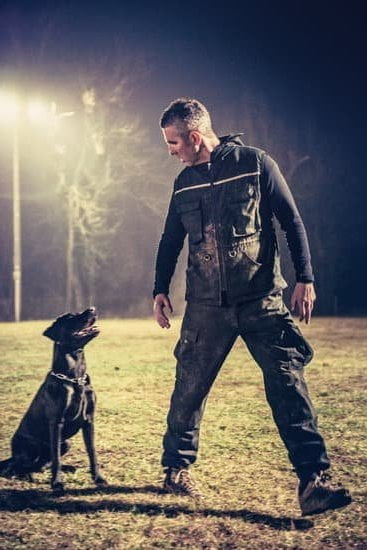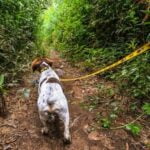Training a dog to catch mice might seem like an unusual skill, but it can be incredibly useful, especially for those who live in rural areas or have rodent problems. Dogs have been bred for various purposes, including hunting, and many breeds still retain their natural instinct to pursue small prey. In this article, we will explore how to train a dog to catch mice, from understanding their hunting instincts to teaching them the necessary skills for successful mouse hunting.
The instinct of dogs to hunt is deeply rooted in their genetic makeup. Historically used as hunters and protectors by humans, dogs possess a strong drive to chase and capture prey. By understanding and tapping into this natural instinct, owners can train their dogs to effectively control mice populations in their homes or properties.
In the following sections, we will delve into why dogs make great mouse hunters by examining the specific abilities of different breeds, the basic training and obedience required for mouse hunting, as well as techniques for familiarizing them with the scent of mice. Additionally, we will discuss methods for teaching dogs how to identify and track the scent of mice and provide tips on setting up simulated hunting scenarios for practice.
Lastly, we will address safety considerations when training a dog to catch mice and celebrate the benefits of having a successful mouse-hunting dog. Stay tuned for an in-depth guide on training your furry companion.
Why Dogs Make Great Mouse Hunters
Dogs have been used for centuries to assist in hunting and pest control, and their natural instincts make them excellent mouse hunters. Different breeds of dogs have varying levels of prey drive and hunting abilities, making some more adept at catching mice than others. Terriers, for example, are known for their strong prey drive and determination when it comes to hunting small animals, while other breeds may require more specialized training to develop their hunting skills.
One of the key factors that make dogs great mouse hunters is their heightened sense of smell. Dogs have an incredible olfactory sense, allowing them to detect the scent of mice even when they are not visible. This makes them valuable assets in controlling rodent populations in homes and properties. Additionally, dogs’ agility and speed enable them to chase and catch mice with relative ease.
When considering which breed of dog to train as a mouse hunter, it’s important to take into account their natural instincts and characteristics. While some breeds may excel at mouse hunting without much training, others may need more guidance and encouragement to develop their hunting skills effectively.
Training a dog to catch mice can be a rewarding experience for both the owner and the dog. It allows the dog to engage in natural behaviors while also providing a practical solution for managing pest problems. By understanding the inherent hunting abilities of different breeds and providing appropriate training, owners can effectively harness their dog’s potential as a skilled mouse hunter.
| Dog Breed | Natural Hunting Abilities |
|---|---|
| Terrier | Strong prey drive, determination in hunting small animals |
| Beagle | Excellent sense of smell, tracking abilities |
| Dachshund | Low-to-ground stature for chasing mice into tight spaces |
Preparing Your Dog for Mouse Hunting
Training a dog to catch mice may seem like a daunting task, but with the right approach, it can be an enjoyable and bonding experience for both you and your pet. Before introducing your dog to the scent of mice and teaching them how to track, it is essential to ensure that they have a strong foundation in basic training and obedience.
This not only sets the groundwork for their hunting skills but also ensures their safety and responsiveness during the process.
Basic training should include commands such as sit, stay, come, and leave it. These commands will not only be useful during hunting scenarios but also in everyday situations. For example, if your dog comes across a mouse outside of a training session, the leave it command can prevent them from engaging with potentially harmful rodents.
Obedience is equally important, as hunting requires a certain level of control and focus from your dog. They should be able to listen to and follow commands even in distracting or exciting environments.
By laying this groundwork, you are setting your dog up for success when it comes to learning how to hunt mice effectively. Regular practice of these basic training and obedience skills will help reinforce good behavior while preparing your dog for the next steps of mouse hunting training.
Introducing the Scent of Mice
Dogs have a natural instinct to use their sense of smell for hunting and tracking prey. Introducing the scent of mice to your dog is an essential step in training them to catch mice. This process helps familiarize your dog with the unique scent of mice, making it easier for them to track and hunt these small rodents.
One effective way to introduce the scent of mice to your dog is through the use of scented toys or training aids specifically designed for this purpose. These aids are typically infused with mouse scent and can be used during training sessions to help your dog associate the smell with the act of hunting. It’s important to start this process gradually, allowing your dog to become accustomed to the scent before moving on to more advanced tracking exercises.
Another method for familiarizing your dog with the scent of mice is by using live or freshly caught mice (ensuring that they are safely contained and unable to harm your pet). By allowing your dog to sniff and observe these creatures from a safe distance, they can begin associating the unique smell with the presence of mice. This hands-on approach can be particularly effective for breeds with strong hunting instincts.
As with any aspect of training, patience and consistency are key when introducing your dog to the scent of mice. It’s important not to rush this process and allow your pet ample time to become comfortable and confident in recognizing and tracking the scent. By taking this gradual approach, you can effectively prepare your dog for successful mouse-hunting adventures.
| Method | Description |
|---|---|
| Scented Toys or Training Aids | Infused with mouse scent, used during training sessions |
| Live or Freshly Caught Mice | Dog is allowed to sniff and observe from a safe distance |
Targeting and Tracking
Training your dog to catch mice involves teaching them how to target and track the scent of these small rodents. This section will focus on the specific techniques and steps required to help your canine companion develop this skill.
Introduction to Scent Training
Before diving into mouse-specific scent training, it’s important to lay a foundation for your dog’s ability to identify and follow scents in general. Basic obedience commands such as “sit,” “stay,” and “come” are essential, as they provide the framework for more advanced scent tracking exercises. Additionally, introducing your dog to different scents, such as essential oils or food items hidden in the environment, can help them become familiar with using their nose to locate specific odors.
Teaching Your Dog Mouse Scent
Once your dog has a good understanding of how to track scents, you can begin introducing them to the scent of mice. Using a clean mousetrap or bedding material from a mouse nest, allow your dog to sniff the item while associating it with positive reinforcement, such as treats or praise. Gradually increase the exposure to mouse scent by placing the item in different locations and encouraging your dog to find it.
Practice and Progression
As your dog becomes more confident in identifying the mouse scent, you can start incorporating tracking exercises into their daily routine. Hide the mouse-scented item in various locations around your home or property and encourage your dog to locate it using their nose. Gradually increase the complexity of these exercises by adding distractions or obstacles for them to navigate while following the scent trail.
By following these targeted training methods, you can effectively teach your dog how to identify and track the scent of mice, ultimately transforming them into successful rodent hunters within your home or property.
Practice Makes Perfect
Creating a Mock Mouse Habitat
To effectively train your dog to catch mice, it’s important to create simulated hunting scenarios that mimic real-life situations. One way to do this is by setting up a mock mouse habitat in a controlled environment.
This can be as simple as placing some hidden food pellets or treats in a designated area for your dog to sniff out and “hunt.” You can also use specially designed mouse scent training aids or even live mice (in a secure container) to simulate the experience.
Utilizing Targeted Training Sessions
Once you have established the mock mouse habitat, it’s essential to conduct targeted training sessions with your dog. Start by introducing the scent of mice in the designated area and encourage your dog to use their natural hunting instincts.
Use verbal commands and hand signals to guide them towards the target, and reward them with praise and treats when they exhibit hunting behavior. Gradually increase the difficulty of the scenarios by adding more distractions or obstacles for your dog to navigate through.
Monitoring Progress and Adjusting Training Techniques
As with any type of training, it’s crucial to monitor your dog’s progress and make adjustments as necessary. Pay attention to their response to different stimuli and adapt your training techniques accordingly. Some dogs may require more time to acclimate to the scent of mice, while others may need additional encouragement or varying levels of difficulty in simulated hunting scenarios. By continuously assessing their performance and making appropriate changes, you can optimize the effectiveness of the training process.
By incorporating these simulated hunting scenarios into your dog’s training regimen, you can enhance their ability to catch mice while ensuring a safe and controlled environment for both your pet and potential rodent intruders.
Encouraging and Reinforcing Hunting Behavior
When training your dog to catch mice, it’s important to use positive reinforcement techniques to encourage and reinforce hunting behavior. Positive reinforcement involves rewarding desired behaviors with treats, praise, or play, which can be highly effective in teaching your dog to hunt for mice.
Here are some positive reinforcement techniques you can use to encourage your dog’s hunting instincts:
1. Treat rewards: When your dog exhibits a hunting behavior such as chasing or barking at the scent of mice, immediately reward them with a high-value treat. This will create a positive association with the hunting behavior and motivate them to continue doing it.
2. Verbal praise: Dogs respond well to verbal praise, so be sure to shower your dog with enthusiastic praise whenever they show interest in hunting for mice. Use phrases like “Good job.” or “What a good hunter you are.” to reinforce their behavior.
3. Playtime: Incorporating play into your training sessions can also reinforce hunting behavior. After your dog has successfully targeted or tracked a simulated mouse scent, engage in a game of tug-of-war or fetch as a reward for their hard work.
By using these positive reinforcement techniques, you can effectively train your dog to catch mice while also strengthening the bond between you and your furry companion.
Keeping Your Dog Safe
As you embark on the journey of training your dog to catch mice, it’s important to prioritize their safety and well-being. While many dogs possess a natural instinct for hunting, it’s crucial to take certain precautions and considerations when introducing them to the task of mouse hunting within your home or property.
To ensure the safety of your dog during mouse hunting activities, consider implementing the following measures:
- Supervision: Always supervise your dog during hunting sessions to prevent any accidents or injuries.
- Training collar: Invest in a sturdy and reliable training collar to have better control over your dog while they are tracking or targeting mice.
- Vaccinations: Keep your dog up-to-date with vaccinations as they may come into contact with rodents carrying diseases.
It’s also essential to take into account the potential risks associated with using certain methods for mouse elimination. For instance, traditional mousetraps containing harmful chemicals should be placed out of reach from your dog. Similarly, if you opt for natural deterrents like essential oils or ultrasonic devices, make sure they are pet-safe and won’t cause any harm to your furry friend.
Lastly, consider the impact of stress on your dog. Intensive hunting activities might lead to heightened anxiety or exhaustion in some dogs. It’s important to monitor their behavior and provide them with ample rest and relaxation after each training session.
By prioritizing these precautions and considerations, you can ensure that both you and your dog have a safe and successful experience while training them to catch mice.
Remember as well that keeping control over this instinctual behavior is just as important as cultivating it.
Conclusion
In conclusion, training a dog to catch mice can be a rewarding experience for both the owner and the pet. Understanding the natural instinct of dogs to hunt and honing their abilities through basic training and obedience lays the foundation for successful mouse hunting. By introducing the scent of mice and teaching targeting and tracking skills, owners can prepare their dogs for simulated hunting scenarios that will help reinforce their hunting behavior.
The benefits of having a mouse-hunting dog are numerous. Not only does it provide an effective and natural method of pest control, but it also allows the dog to engage in an instinctual behavior that provides mental stimulation and fulfillment. Additionally, the bond between the owner and their dog can strengthen through this shared activity, as positive reinforcement techniques are used to encourage and reinforce hunting behavior.
Ultimately, training a dog to catch mice requires patience, consistency, and dedication from the owner. By creating a safe environment for both the dog and the household, owners can celebrate the successful training of their pet as they witness their canine companion using its natural abilities in a productive and fulfilling way. With proper guidance on preparing your dog for mouse hunting, any breed has what it takes to become an efficient mouse hunter within your home or property.
Frequently Asked Questions
Will Mice Leave if They Smell a Dog?
Mice may not necessarily leave if they smell a dog, but the presence of a dog in the house can act as a deterrent for mice. The scent of a dog can signal danger to mice and make them less likely to stick around.
Will Having a Dog Scare Away Mice?
Having a dog can indeed scare away mice due to their natural hunting instincts. Dogs have keen senses and can detect the presence of mice, which can discourage rodents from entering or staying in the house. However, this may not entirely eliminate a mouse problem.
How Do I Get Rid of Mice in My House With a Dog?
To get rid of mice in your house with a dog, it’s important to take preventive measures such as sealing entry points, keeping food sealed, and maintaining cleanliness. You can also leverage your dog’s abilities by allowing them to sniff out mouse hiding spots or using them for monitoring potential mouse activity in your home.
Additionally, using non-toxic methods like traps or ultrasonic devices can help control the mouse population without harming your pet.

Welcome to the blog! I am a professional dog trainer and have been working with dogs for many years. In this blog, I will be discussing various topics related to dog training, including tips, tricks, and advice. I hope you find this information helpful and informative. Thanks for reading!





